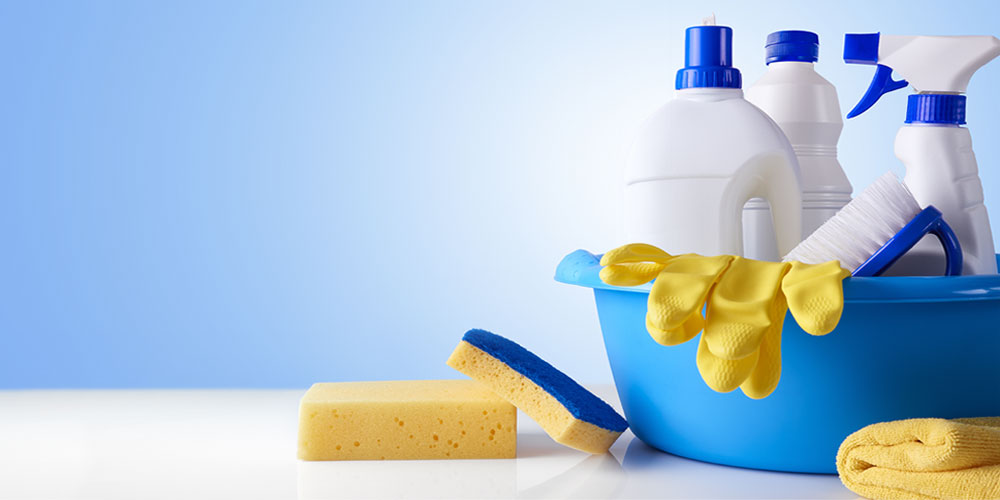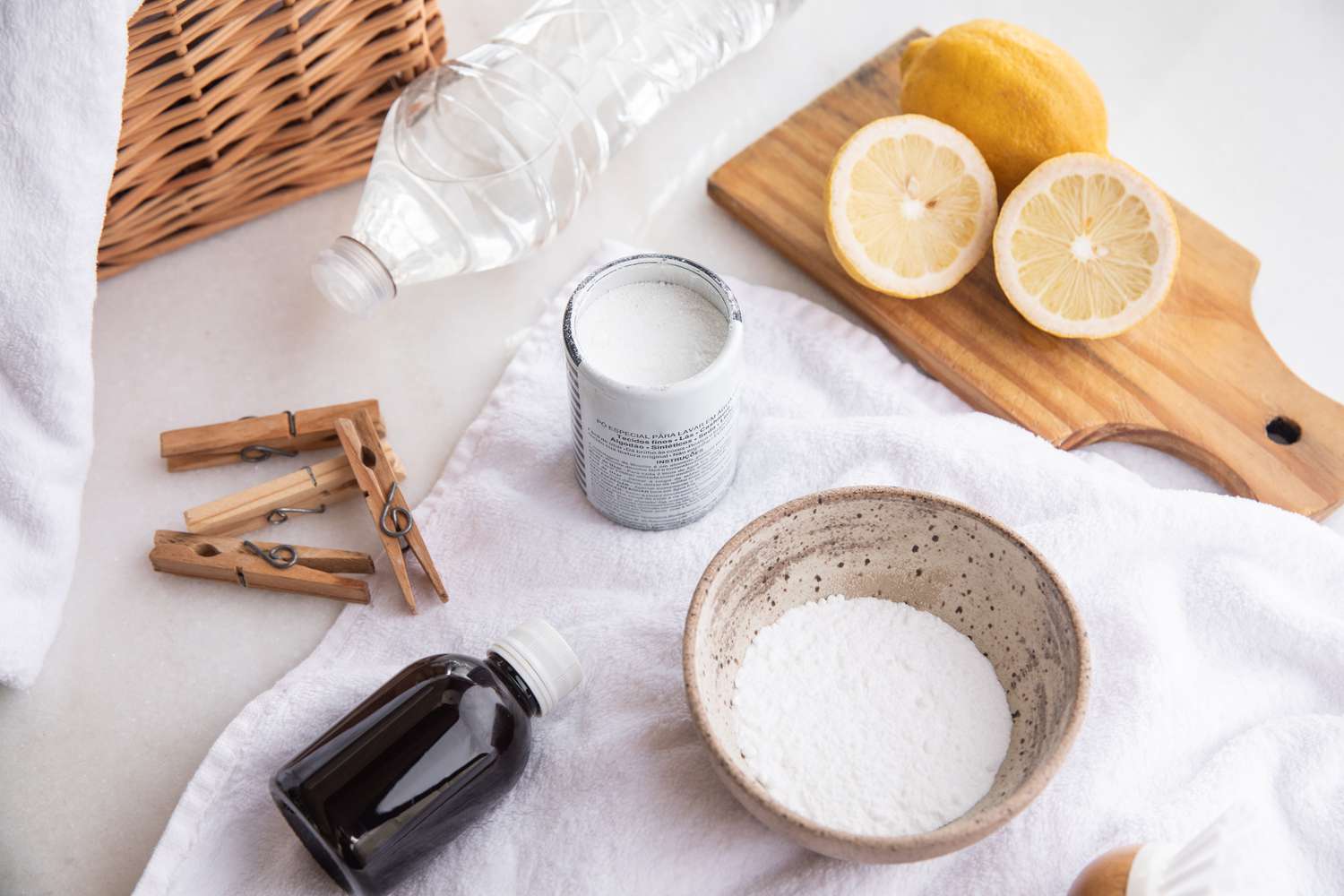Bleach is a common household cleaner found in most homes.
But is bleach bad for the environment?
This article takes an in-depth look at the effects of bleach and provides the facts you need to make an informed decision.
Is Bleach Bad for the Environment?
Yes, bleach is bad for the environment.
The chemicals in bleach contaminate waterways and are toxic to aquatic life.
Bleach production also leads to the formation of concerning byproducts like chloroform.
While bleach is an effective cleaning agent, it persists in ecosystems, bioaccumulates, and contributes to pollution.
More sustainable and eco-friendly alternatives to bleach exist.
Key Points
- Bleach contains sodium hypochlorite and chlorine compounds that are not biodegradable and persist in water.
- Production of bleach can result in emissions of mercury and organochlorides.
- Alternatives like vinegar, hydrogen peroxide, and baking soda get surfaces clean without toxins.
How Does Bleach Impact Waterways and Aquatic Life?
Bleach contains chemicals like sodium hypochlorite that are toxic to marine ecosystems.
When bleach runs off into rivers, lakes, or oceans, it poisons the water and aquatic life.
Even small amounts of bleach can harm fish, invertebrates, and plants.
Exposure to diluted bleach solutions can irritate the gills of fish, inhibiting their ability to breathe.
High concentrations of bleach are fatal.
Bleach also reduces essential oxygen levels in the water that fish and plants need to survive.
Additionally, the chemicals in bleach break down very slowly.
They persist in waterways and continue damaging ecosystems long after the initial contamination.
What Concerning Byproducts Form During Bleach Production?
The production of bleach results in several toxic byproducts that also pose risks.
These include organochlorides like chloroform, which is a probable human carcinogen.
The manufacturing process for bleach often utilizes mercury cells.
This leads to mercury emissions that can contaminate soil and water.
Mercury exposure causes neurological damage to humans and animals.
Finally, bleach production consumes large amounts of chlorine.
This depletes oxygen in waterways and is toxic to aquatic life nearby manufacturing plants.
Is Bleach Considered an Environmentally Friendly Cleaning Product?
While bleach effectively removes stains, kills germs, and cleans surfaces, it is far from an eco-friendly product.
Bleach contains chemicals that are not readily biodegradable or sustainable.
Its production process also harms the environment through pollution.
There are less toxic and more sustainable alternatives, like hydrogen peroxide, baking soda, and vinegar.
While not as potent, these greener options get the job done without long-lasting impacts on waterways and ecosystems.
Can Bleach Pollute Soil When Disposed of Improperly?
Bleach and its byproducts absolutely can contaminate soil when disposed of carelessly.
Letting bleach soak into the ground can alter soil chemistry and make it unable to support plant life.
The sodium in bleach replaces nutrients like magnesium and calcium in the soil, inhibiting plants’ ability to absorb essential minerals.
It increases soil salinity, which restricts water uptake in plant roots.
Bleach also reacts with organic matter in the soil, causing it to erode and degrade faster.
This destroys the soil structure and microbiome that plants and animals rely on.
How Does Bleach Affect Wastewater Treatment Systems?
Most bleach used in homes ends up flowing into wastewater treatment plants.
This causes several issues for water treatment:
- Bleach reacts strongly with other chemicals, making wastewater more difficult to treat and process safely.
- It can kill the microbes used to break down contaminants in sewage treatment plants. This reduces the system’s overall treatment capacity.
- Bleach forms toxic byproducts like chloroform when it reacts with organic matter in waste. These byproducts are difficult to remove and often pass through into waterways.
- It increases corrosion in treatment plant infrastructure, shortening equipment lifespans.
Overall, bleach disrupts biological processing in sewage plants and increases wear on critical wastewater infrastructure.
Can Exposure to Bleach Fumes Harm Human Health?
Yes, inhaling bleach fumes can irritate the eyes, skin, and respiratory tract.
Bleach releases volatile organic compounds (VOCs) that are immediately dangerous to human health in high concentrations.
Long-term exposure to diluted bleach fumes likely causes adverse health effects too.
Bleach VOCs produce free radicals in the body that damage cell membranes and DNA.
This increases cancer risk and triggers respiratory conditions like asthma.
Always use bleach in well-ventilated areas.
Combine it with water to reduce vapor emissions.
Wear gloves and eye protection when handling concentrated bleach to minimize exposure.
Does Bleach Contribute to Air Pollution When Disposed of Improperly?
Bleach reacts with other chemicals when disposed of carelessly outdoors or in landfills.
These reactions release chlorine gas and other volatile compounds into the air.
In municipal landfills, bleach seeps out with waste and reacts with organic acids and metals.
This produces dioxins, phosgene, and other toxic gases that pollute the surrounding environment.
Improperly disposed bleach also generates ozone-depleting chlorofluorocarbons through reactions with hydrocarbons.
The gases released diminish air quality and contribute to environmental issues like acid rain, smog formation, and climate change.
Responsibly recycling or disposing of bleach prevents these emissions.
Can Bleach & Its Byproducts Accumulate in the Environment?
Unfortunately, yes.
Bleach itself readily degrades into salt and water.
But many hazardous byproducts like chloroform and dioxins persist for decades in soil, water, and air.
Dioxins bind strongly to sediments and bioaccumulate up the food chain.
Animals and humans build up high dioxin levels over time by eating contaminated plants and smaller prey.
Similarly, mercury released from bleach production accumulates in fish.
This adds to the already high mercury concentrations found in predatory fish like tuna.
Eating contaminated seafood poisons humans.
Are There More Sustainable Bleach Alternatives?
Thankfully, there are effective bleach replacements that are gentler on the planet:
- Hydrogen peroxide – Breaks down into water and oxygen. Works well for disinfecting and whitening.
- Vinegar – Removes grime and kills bacteria without toxic fumes. Mix it with water for an all-purpose cleaner.
- Baking soda – Non-toxic abrasive that lifts stains. Also neutralizes acid-based grime in bathrooms and kitchens.
- Lemon juice – Natural acid cuts through grease and bleach-sensitive fabrics. Avoid contact with skin.
- Borax – Naturally occurring mineral detergent that cleans and deodorizes.
These bleach alternatives get clothes, dishes, and surfaces clean without long-term damage to ecosystems and human health.
What Are Some Methods Of Using Bleach More Sustainably?
While bleach has concerning environmental impacts, there are ways to use it more responsibly to reduce its footprint:
- Opt for bleach products labeled “environmentally friendly” that use less toxic additives and chemicals compared to conventional bleach. Look for options with Safer Choice or Green Seal certifications.
- Check the concentration and only purchase the strength you need. Avoid industrial-strength bleach products when household varieties will suffice.
- Read the label and buy the smallest bottle size for your needs. This minimizes plastic waste from packaging.
- Use the correct bleach dosage indicated on the bottle. More is not better and will just lead to extra waste and emissions.
- Never pour bleach or rinse water containing bleach residues onto soil or down storm drains. Dispose of it carefully.
- Consider alternative stain-removal methods when possible, like rubbing alcohol or hydrogen peroxide.
- Look into more eco-friendly bleach alternatives like borax, lemon juice, or vinegar for less toxic cleaning.
The Bottom Line – We Should Use Bleach Sparingly
Bleach is undoubtedly toxic and harms aquatic ecosystems through water contamination.
Its production also generates carcinogens and air pollutants.
While bleach has cleaning power, it persists and accumulates in the environment, posing risks to both wildlife and human health.
More sustainable options are readily available.
Use bleach sparingly and explore greener alternatives whenever possible.
We all share responsibility for keeping our planet clean in ways that do minimal harm.
FAQ
What types of aquatic life are most vulnerable to bleach contamination?
Bleach is toxic to both freshwater and saltwater ecosystems. Fish, crustaceans, mollusks, and amphibians are especially vulnerable when exposed to diluted bleach solutions. High concentrations of bleach can kill all aquatic lifeforms by reducing oxygen levels.
How does bleach affect human health when inhaled?
Inhaling bleach fumes irritates the eyes, skin, and respiratory tract. Long-term exposure to bleach gases likely increases cancer risk and can trigger asthma due to free radical formation. Use bleach only in well-ventilated areas.
Can bleach seep into groundwater supplies if disposed of improperly?
Yes, bleach can infiltrate into groundwater if poured onto soil or left to leak from landfills. This poisons wells used for drinking water and irrigation. Bleach alters water chemistry, making it unfit for human consumption and use.
GreenChiCafe is passionate about the environment and our natural world. Please check out our website for more content on living sustainably. We aim to provide researched information to help our readers make informed, eco-friendly choices.

Annie is a passionate environmental writer and activist. She has been writing about sustainability, conservation, and green living for over 15+ years. Annie is dedicated to raising awareness about environmental issues and providing practical tips for living an eco-friendly lifestyle. When she’s not writing, you can find her volunteering with local environmental organizations, teaching workshops on zero waste living, or exploring nature. Feel free to get in touch with Annie: annie@greenchicafe.com


